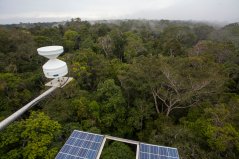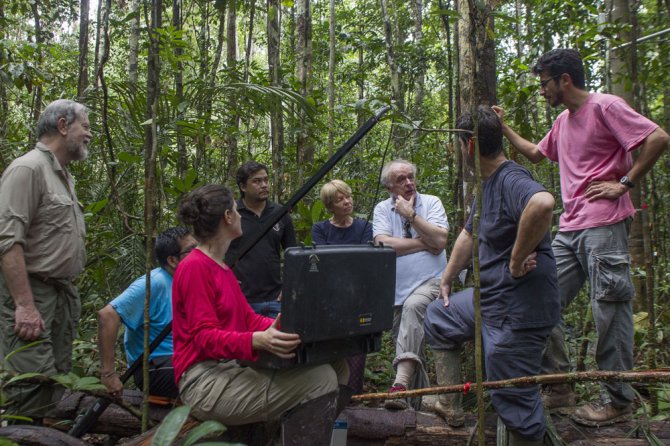
Project
AMAZON-FACE - impact of future elevated CO2 on the forests of Amazonia
Amazon-FACE is a large and long-term initiative to study the direct impact of future elevated CO2 concentrations on the forests of Amazonia. The overarching question is whether increasing CO2 concentrations will stimulate biomass growth, or at least increase forest resilience against other detrimental effects of climate change, as a result of its stimulating effects on photosynthesis and water use efficiency. The most important scientific challenge is to determine the degree to which the poor soils, particularly extremely low phosphorus, will limit such stimulating effects. Whether or not the forests of Amazonia will suffer under climate change is crucial for the future of Amazonian society, South-American rainfall regimes and global climate.

The experiment, located in an undisturbed forest reserve north of the city of Manaus (Amazonas state, Brazil), consists of a total of four replicate planned plot pairs of 30 m diameter, of which one is now being investigated, where CO2 will be artificially elevated by 200 ppm above ambient. This is achieved by pumping large amounts of the gas into the forest, in a controlled way. The forest, trees, and soils, and their dynamic physiology will be monitored in detail during the experiment. While the pre-treatment work started in 2015 and is well under way and the technology is ready, the deliverance of CO2 to the plot is planned only for 2018 at the earliest. After installation, fumigation and the experiment is planned to last for about 10 years.
Photosynthesis
While with increasing CO2, photosynthesis is likely to increase and water use will go down, it is the full chain of further ecosystem physiology that determines whether or not growth will take place, metabolism will speed up, roots will harvest more nutrients from the soil, etc. Also, while direct water use is likely to go down, the feed-backs on canopy temperature, soil moisture and atmospheric moisture recycling are much more uncertain and intertwined with the metabolism. The experiment is a full-scale, natural test case to elucidate whether and when any enhancements in photosynthesis will indeed lead to higher productivity and stronger uptake of CO2 from the atmosphere.

Wageningen University & Research
Bart Kruijt, of Wageningen Environmental Research, is involved as a member of the Scientific Steering Committee. As an Ecophysiologist, he is involved in both the above-ground experimental work (photosynthesis measurements, canopy temperatures, general strategic planning) and in pre-treatment modelling of the experiment, aimed at identification of crucial questions and hypotheses. Issues resulting from such modelling include the question whether soil uptake will be enhanced or nutrients in the plants will be reduced, whether turn-over and mortality will change and even if herbivory might be reduced or enhanced.